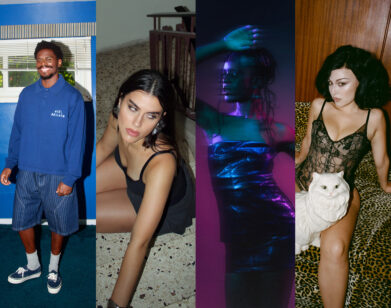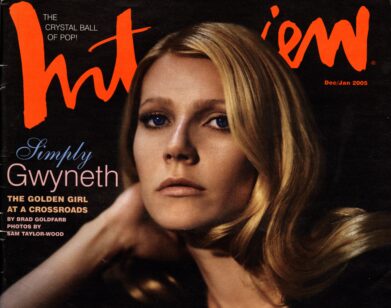Grace Wales Bonner tells Ishmael Reed about the ‘rhythmicality’ of her fashion
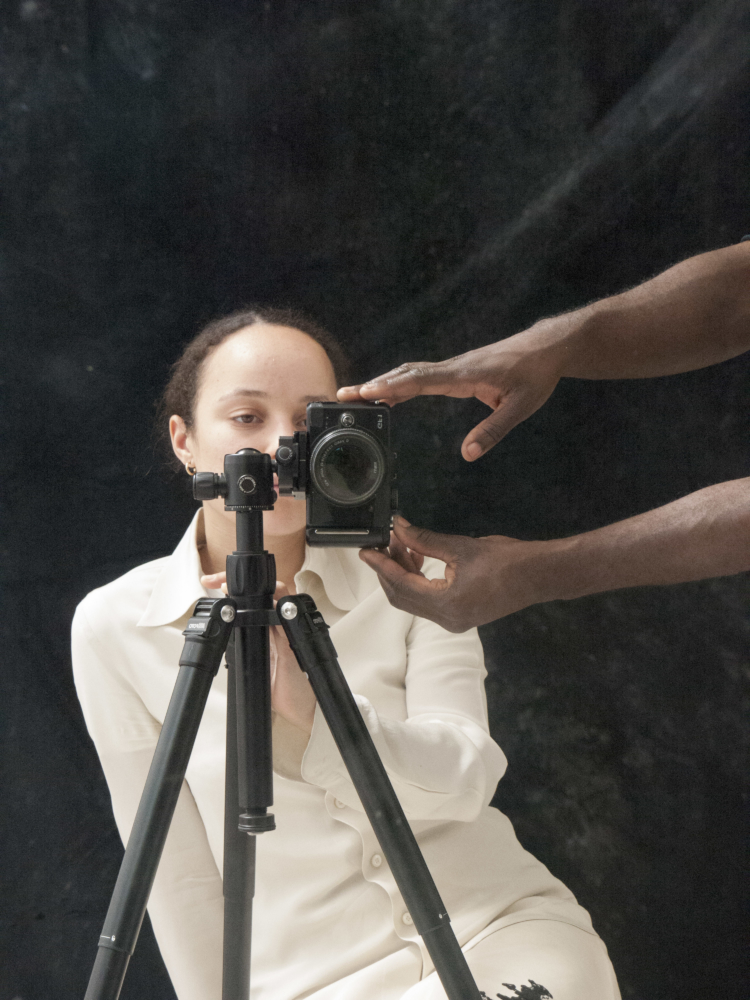
Darkroom Mirror (_2150782), 2018. Copyright Paul Mpagi Sepuya. Courtesy the Artist.
For years, the half-Jamaican, London-based fashion designer Grace Wales Bonner has been operating her eponymous label like a research institute devoted to deterritorialized cultures, with a constant output of projects like her lookbook drawn from James Baldwin’s bellbottoms and the Siddi community. Her newest venture, a multi-sensory installation at London’s Serpentine Gallery called A Time for New Dreams, which opens tomorrow, turns the white cube gallery setting into a portal for mysticism and the occult. Along with Robert Farris Thompson’s Face of the Gods, one of her major influences in this investigation has been writer Ishmael Reed, the prolific author of satirical novels such as Mumbo Jumbo — whose title was borrowed for the name of Wales Bonner’s next collection, which will be debuted with the culmination of the exhibit — and more recently the author of an incisive takedown of Hamilton called “The Haunting of Lin-Manuel Miranda.” On the eve of the opening at the Serpentine, Wales Bonner and Reed caught up to compare their work and discuss fashion as ritual, Reed’s days with Andy Warhol, and finding time to take breaks.
———
ISHMAEL REED: I think the parallel between your work and mine is that we take popular forms and do original things with them. The generation before me was influenced by literature. My generation grew up on movies. My first novel was a horror movie. The second was a cowboy western. I transcended the pulp forms that made up these genres. With Yellow Back Radio Broke-Down, the western novel, I did a lot of historical stuff. I think you do the same thing. We’re all acquainted with the forms that you work with, but you have your own originality or your own stamp on them.
GRACE WALES BONNER: I’m often inspired by literature in the sense that it can put together these different worlds and tangle things and complicate things. Often I start with a text, and then respond to that. I find literature a really important framework to reference. It’s really exciting to be in dialogue with someone like yourself, and just to think about those ideas in a broader way.
REED: I think as a fresh people, if I can use a term like that, so loaded, when black people wear clothes, it is storytelling. It is literature. For my play I read the biography of Harriet Tubman, who was a fugitive slave, and who returned to the plantation and rescued 300 slaves on these excursions. Sometimes she would dress as a man. Blacks have used clothes as camouflage. On one occasion, she came back to liberate her husband, and she found that he had taken up with another woman. She described in detail the kind of clothes that would have attracted him, like calico. When black people wear clothes, they often are sending a message. They’re telling a story.
WALES BONNER: I think about that a lot, being able to do that through characters. I see the collections I create exhibiting a specific world that I’ve collaged and put together through different textures, different sounds, words, and rhythms. That creates an environment for these characters to inhabit. That’s what I’m responding to. I also remember that you wrote about Sacred Threads, which I thought was a really incredible title, connecting to this idea of lineage and being able to acknowledge the past and histories that inform aesthetic practice. Is that something you can talk a little bit about?
REED: Absolutely. There are clothes that are associated with ritual. My new novel also indicates a parallel between your work and mine because it draws from different cultures, which is what the African aesthetic does. I have characters who are dressed for ritual. One can identify these, you could call them saints, or loas, or orishas, by what they wear. In the new novel I have, I was searching for some material, and I accidentally ran across a character named Brigid who was both Irish and African. First she’s a pagan goddess, and then the monks transform her into a saint, and she ends up in New Orleans, and she’s with this black guy named Baron Samedi. They both wear top hats. You can identify them by their clothes. Different orishas or loas or saints dress according to their cult. For example, I mention Oshun is the daughter of Olodumare, who is the head god in Nigerian religion. Her followers wear white. Then she’s transferred to Brazil, and it changes. She likes soaps and liqueurs. The point is that fashion is very important in ritual.
BONNER WALES: Yes, I’ve seen that stuff.
REED: Erzulie wears red. Erzulie is the love goddess of Haiti, but at the same time she’s the Virgin Mary. All of them have saints that cover them so the authorities won’t crack down. When somebody’s worshiping the Virgin Mary, they know that it’s really Erzulie. She wears red and she has a certain costume. Fashion is probably as important as drumming and all the other accessories that go with ritual.
BONNER WALES: That’s profound. Were you talking about Conjugating Hindu, or is that a different novel that you’re referring to?
REED: No, it’s a novel that combines African and Hindu. It had a black man who’s obviously performing an African ritual, but he had a Krishna. I don’t know whether it was Krishna. It couldn’t identify the Indian god.
BONNER WALES: I think it was Krishna. I sent it to you, that image. That was from my research.
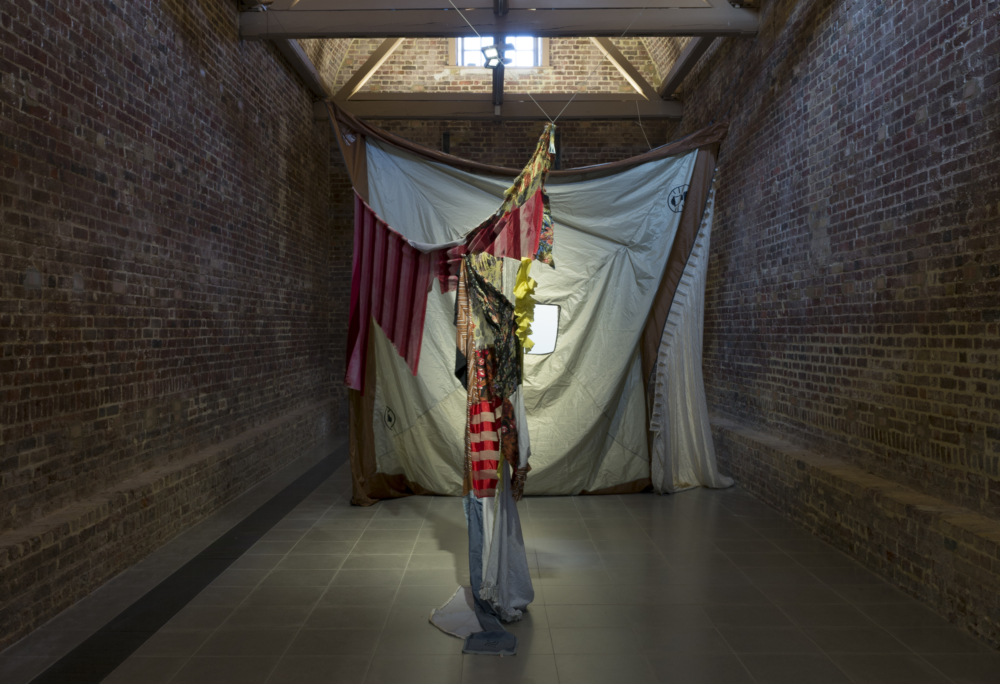
Grace Wales Bonner’s “A Time for New Dreams.” Serpentine Galleries, © 2019 readsreads.info
REED: It’s just a coincidence that I read the novel. I studied Hindi for about nine months. I used Brigid and her group, she’s noted for robust sexuality and there’s certain things that go along with her. I did a new interpretation of Krishna, which I think offended some Hindu nationalist parities. But that’s what we do. We can be sassy. We can always be satirical. I noticed, for example, there are kaori shells that are used in some of your work, right?
BONNER WALES: Yes. Exactly.
REED: Both of us have a multicultural approach to art. You draw from different traditions in your work.
WALES BONNER: Yeah, I think so. I also feel like I have this sense of freedom, an acknowledgement of my ancestors and a history that’s come before. It’s an open space for me to be able to feel quite liberated and playful in the way that I reference histories or I enter different territories and worlds. I’m always interested in the idea of fluidity and the mixing of references — a collage approach, which is a style in itself. Another thing that I always think about is rhythmicality. That’s something that I feel is very present in your texts and the way you perform. I’m thinking about Mumbo Jumbo, the pacing of it and the intonation. You’re very musical yourself. How is rhythm ingrained in what you do and create?
REED: I thought that it was apt that you mentioned Thelonius Monk as one of your influences. This is my idea about postmodernism, that it advances or extends what the modernists did. For example, Richard Wright, who’s one of our great writers, wrote haiku. I tried to extend that by actually studying Japanese and writing haiku in Japanese.
WALES BONNER: Wow.
REED: I looked up pinstripes, and I think they’re of English origin. I know that you used that in your work. The old, and the new. The avant-garde. I actually play jazz piano. I have a CD out of my quintet.
WALES BONNER: I’ve seen your videos. It’s incredible, and I’m including one of you playing piano in the exhibition.
REED: I look at one of his scores, and he has chords that are very exotic or unusual, but at the same time in the same piece he has stride piano, which is a 1920s style that avant-garde, younger musicians no longer use. I think that’s something that characterizes your work. You use both the old and the new, the traditional as well as the avant garde. How did you become a one woman factory? You’re a young woman, and you just seem to be prolific. You must work 24 hours a day or something. Do you get inspired, or do you work by commission?
WALES BONNER: I work in a fashion schedule. I usually produce two collections a year.
REED: Oh my goodness.
WALES BONNER: Each collection is rooted in a very strong body of research. I think there’s a core of my practice and what I’m interested in is very much about connecting worlds and creating environments.
REED: You seem to be driven.
WALES BONNER: I think so. When I started doing design, it was just something I had to do for myself. I wasn’t necessarily aware that there would be the audience for it. It was just a very important expression. It’s been surprising to me how people are willing to engage with what I’m doing. Fashion is actually something that’s so immediately communicative, and that was quite interesting to me, because I’m obviously also very informed by literature. It’s interesting that you can say something very immediately with creating clothing and imagery. That’s been something that I picked up quite early, that actually I can communicate these deep ideas around identity and representation immediately to a bigger audience through creating clothes. As a creative person, I need to be engaged in these intellectual and creative discussions that will motivate me to create clothing. The clothing is the link that allows me to bridge and connect with other worlds, whether that’s with writers or musicians or choreographers. I feel like it’s an immediate focal point. Things then spiral around that. With the show I’m doing at The Serpentine, it’s really exciting that the gallery has acknowledged that what I’m doing is beyond fashion. It’s about representation in a wider conversation. It’s been a real honor to me, and it’s been so exciting to have the opportunity to even talk to you.
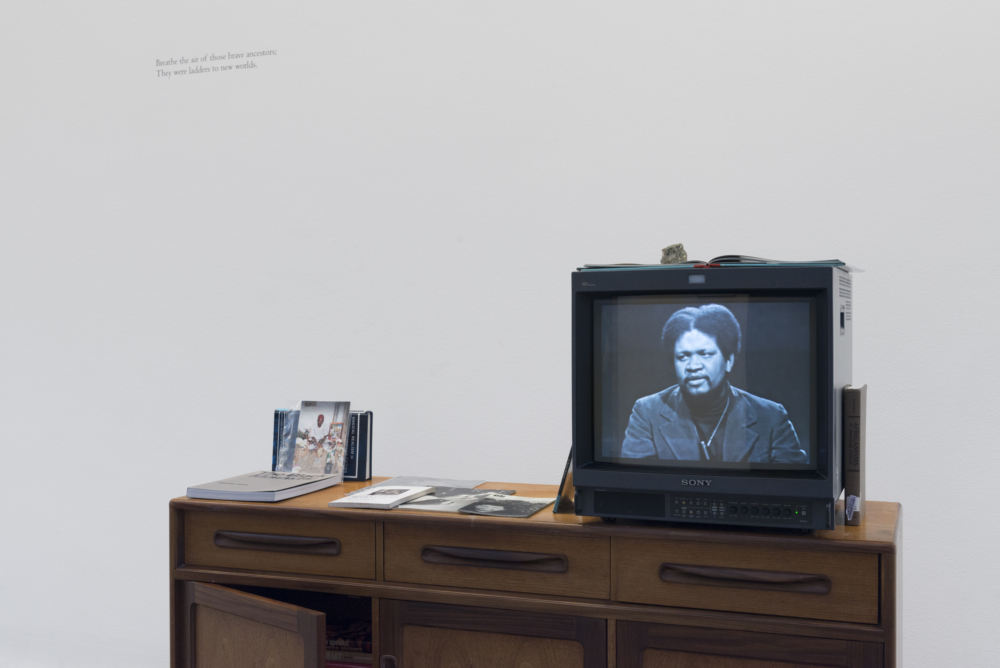
A video of Ishmael Reed, part of “A Time for New Dreams.” Serpentine Galleries, © 2019 readsreads.info
REED: Let me ask you, Grace, how do you come up with these great hats? What’s the inspiration? They’re really terrific.
WALES BONNER: You’ve seen the crystal and cowrie shells skull caps. It’s often a hybrid of forms.
REED: Some look Caribbean, and some look religious. You have all kinds of different hats here. Amazing.
WALES BONNER: I think a lot of my references points are coming from just looking at photographs of black people over different generations. That’s such an amazing resource to find incredible styles.
REED: Have you ever been to Jamaica?
WALES BONNER: Yes. My father’s from Jamaica. I went a lot when I was a child. I spent time in Senegal and Ghana. I think all those memories have been really inspiring. Also, I spent quite a lot of time in India. I think that’s actually where I get my inspiration from, being able to travel and absorb different cultures. Creating this very elevated wardrobe that really speaks to that rich history. I think why I initially started doing fashion is because I felt that sometimes in fashion, people reference that culture but to signify something, as opposed to a more in-depth study. It’s something that I’m fully committed to as a practice, to have a very specific focus point that’s meeting between two cultures, whether that’s between Ethiopia and the Caribbean, or whether that’s through India and America. It’s always about this meeting.
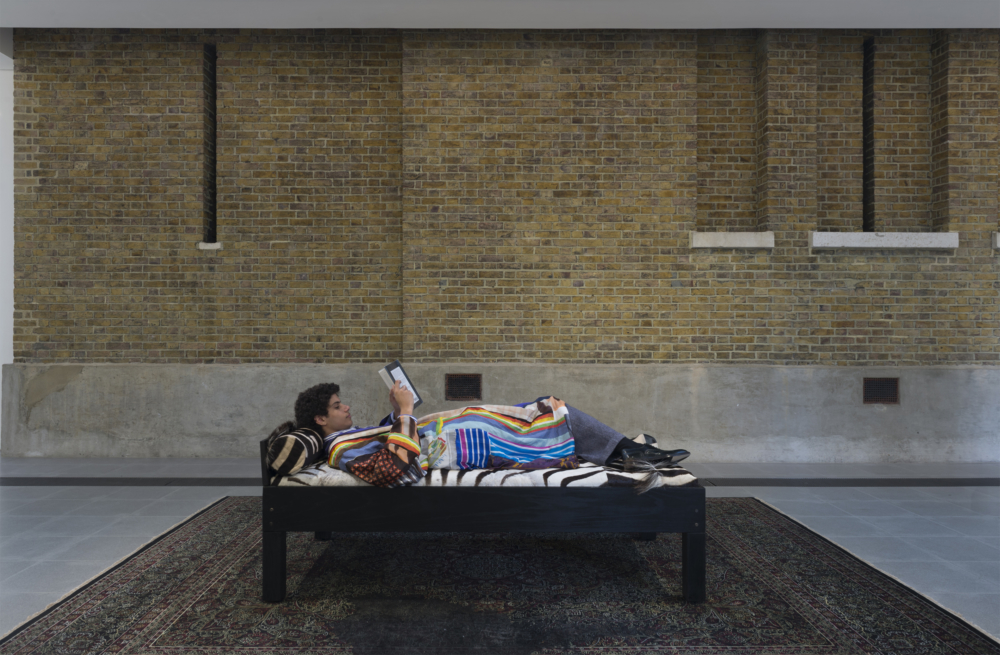
“Grace Wales Bonner: A Time for New Dreams.” Serpentine Galleries, © 2019 readsreads.info
REED: I noticed Little Richard in one of your photographs.
WALES BONNER: Exactly. In terms of research, I’m looking for examples where black people have had a license to be more expressive. He’s quite a great example of that. I’m interested in reflecting that, and having these characters be in dialogue with each other over time.
REED: Have you ever heard of Marie Laveau?
WALES BONNER: No, I don’t think so.
REED: I’m going to send you some material about her. She’s a big industry in New Orleans. She brought Haitian religion to New Orleans. She had a huge following of both whites and blacks, a fabulous person. I was in New Orleans a few months ago and went to a place where they sell her memorabilia or likeness. There were people from all over the world there. She was a business woman. That’s one of the things that inspired me to start a business, which I’ve had since 1974. I think those examples show that one can be in sales, but at the same time be an artist. Like Salvador Dali, Andy Warhol and others.
WALES BONNER: What are you working on at the moment? I know that you have this play that you’ve written.
REED: The play has caused a big storm. There’s a lot of resentment here. You can go to the New York Times and look at some of the comments about the work. I’m used to that. I think you probably have done things that are really controversial. That’s art.
WALES BONNER: How do you deal with that? Do you feel comfortable being in that space?
REED: I’m not in New York, so that’s a big help. I live out here in the west coast. Nobody pays any attention to things that happen east of the Rocky Mountains here. I’m away from the controversy, and I’m away from some of the intense and lethal competition, and the New York pace. It’s a big storm because I’m messing with a hundred million dollar project, and they’re really angry.
WALES BONNER: You were aware of that, and the play really points out that other side to Hamilton.
REED: Hamilton was a terrible person, and because of Miranda, thousands of school children are taking his version. Black intellectuals have always responded to efforts that glorify slaveholders and slave-holding families, like Gone With the Wind, or Birth of a Nation. We have two Native American actors in my play who talk about Hamilton’s policy towards Native Americans, which was extermination. That was their policy. Extermination. We live in a country that cannot deal with the evil of its past. It just can’t come to terms with it.
WALES BONNER: Ishmael, do you think you’ll come to London over the next month? It would be wonderful for you to see the show, or keep the conversation open for further collaboration.
REED: We’d love to come over there. My spouse is one of the great choreographers and scholars of theater on the American scene. She’s worked with Robert Wilson. I would love to bring their film over there. They collaborated on a film about the late dancer Suzushi Hanayagi, who was a fusionist who combined postmodern dance techniques with classical Japanese dance. The film is entitled Kool, K-O-O-L. I have a part in it where I sing a Cab Calloway song in the movie.
WALES BONNER: I need to see that. That sounds incredible.
REED: When Cab Calloway was alive and fainted in Japan from exhaustion, I said it was because he heard me singing his song.
WALES BONNER: Wow.

